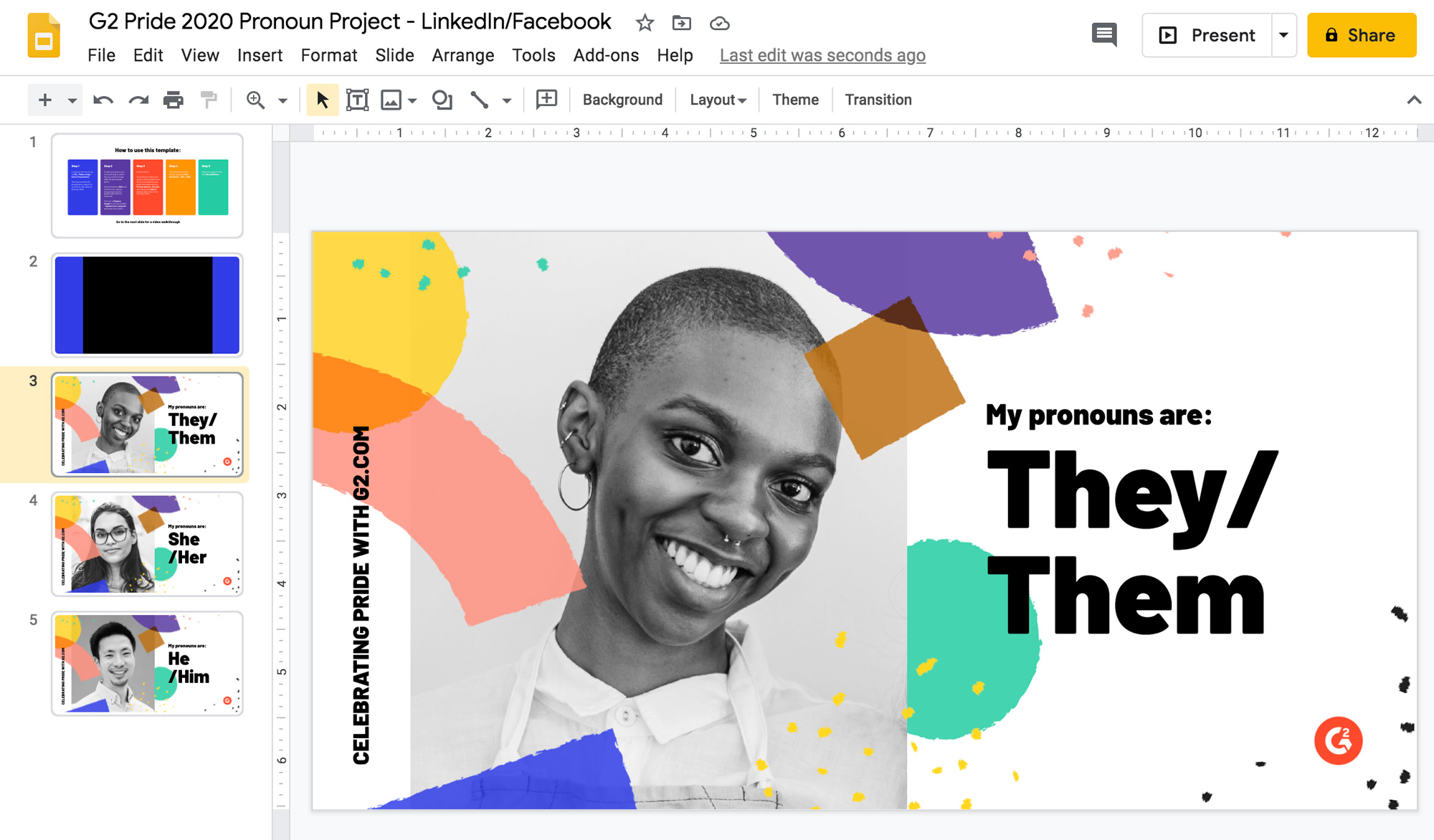Why Pronouns Speak to More Than Just Gender Differences
Encouraging employees to use their personal pronouns in communication can help build a commitment to inclusivity and support mental health.
Earlier this year, my company, G2, launched an initiative for Pride Month called the G2 Pronoun Project. We offered a badge for anyone to download declaring what pronouns they choose to go by. In addition to sharing it across our company, we also made it available externally. For several months, I made a link to this initiative a standard part of my email signature. For me, this is a fairly big move — I take email signatures seriously and even once wrote an article about why these signatures can make important statements.
I’ve been struck by the responses we’ve received to this project and the responses I’ve personally received to my pronoun messaging. Most people have supported the idea — many of them even effusively, including people who, like me, identify by cisgender pronouns (in my case, he/him). But they’ve also seen it as a sign of something much larger than gender. They’ve viewed it as a sign of commitment to respecting everyone’s individuality.

To show respect for individuality, G2 offered downloadable templates for employees to use to assert their personal pronoun preference.
As the United States, and much of the world, reckons with racism, sexism, and other forms of intolerance in society and the workplace, what can sometimes get lost is a focus on individuality. As Paula Glover and Katie Mehnert wrote in a recent article on fixing systemic issues in organizations, “Even well-meaning people expect individuals to speak for entire groups of people. … In encouraging employees to have their own conversations with people of different backgrounds, executives and senior managers should emphasize individuality.”
This is a challenge that leaders who are committed to achieving diversity and inclusion have faced for decades. In their 1995 book Diversity in Organizations, Martin M. Chemers, Stuart Oskamp, and Mark A. Costanzo noted that diversity in organizations generally refers to “socially meaningful categorizations” but that “many people view their individuality and uniqueness as a significant part of themselves that they would not like to be overlooked.”
When it comes to identifying personal pronouns, it’s up to each individual to decide for themselves what to go by. (Even the use of “themselves” instead of “him- or herself” in the previous sentence is, to some, a sign of changing times, as Merriam-Webster has noted.)
